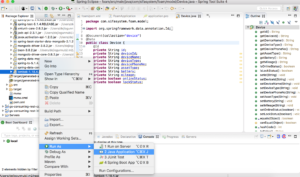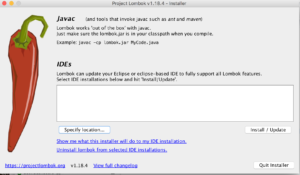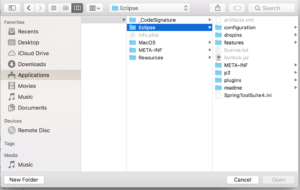Springboot Lombok
Project Lombok is a java library that automatically plugs into your editor and build tools, spicing up your java.
Never write another getter or equals method again, with one annotation your class has a fully featured builder, Automate your logging variables, and much more.
Java can get too verbose for things you have to do such as generating getter and setter methods. These things often bring no real value to the business side of your applications. This is what lombok is for. Lombok is here to help you generate boilerplate code and you focus on business logic. The way it works is by plugging into your build process and autogenerating Java bytecode into your .class files as per a number of project annotations you introduce in your code.
Install Lombok on your computer
- Add dependency
<dependency> <groupId>org.projectlombok</groupId> <artifactId>lombok</artifactId> <optional>true</optional> </dependency> - Find lombok.jar in your project maven directory -> Right click -> Run As -> Java Application

- Click on Specify Location button to choose the path where STS is installed

- Go to Application/Contents/Eclipse/SpringToolSuit4.ini Then click on Install -> Quick Installer

- Restart STS you are good to go
Use Lombok in your project
import java.io.Serializable;
import java.util.Date;
import java.util.HashSet;
import java.util.List;
import java.util.Set;
import java.util.UUID;
import java.util.stream.Collectors;
import javax.persistence.CascadeType;
import javax.persistence.Column;
import javax.persistence.Entity;
import javax.persistence.EnumType;
import javax.persistence.Enumerated;
import javax.persistence.FetchType;
import javax.persistence.GeneratedValue;
import javax.persistence.GenerationType;
import javax.persistence.Id;
import javax.persistence.Index;
import javax.persistence.JoinColumn;
import javax.persistence.JoinTable;
import javax.persistence.Lob;
import javax.persistence.ManyToMany;
import javax.persistence.OneToOne;
import javax.persistence.PrePersist;
import javax.persistence.PreUpdate;
import javax.persistence.Table;
import javax.persistence.Temporal;
import javax.persistence.TemporalType;
import javax.validation.constraints.NotEmpty;
import org.hibernate.annotations.CreationTimestamp;
import org.hibernate.annotations.ResultCheckStyle;
import org.hibernate.annotations.SQLDelete;
import org.hibernate.annotations.Type;
import org.hibernate.annotations.UpdateTimestamp;
import org.hibernate.annotations.Where;
import com.fasterxml.jackson.annotation.JsonIgnoreProperties;
import com.fasterxml.jackson.annotation.JsonInclude;
import com.fasterxml.jackson.annotation.JsonInclude.Include;
import com.social.api.address.Address;
import com.social.api.user.role.Role;
import lombok.AllArgsConstructor;
import lombok.Getter;
import lombok.NoArgsConstructor;
import lombok.Setter;
import lombok.ToString;
@Setter
@Getter
@ToString
@AllArgsConstructor
@NoArgsConstructor
@JsonInclude(value = Include.NON_NULL)
public class User implements Serializable {
private static final long serialVersionUID = 1L;
private Long id;
private String firstName;
private String lastName;
private String email;
private String password;
private String phoneNumber;
private Date dateOfBirth;
private String aboutMe;
private String profileImageUrl;
private String coverImageUrl;
private Date passwordExpirationDate;
private Integer invalidPasswordCounter = 0;
}